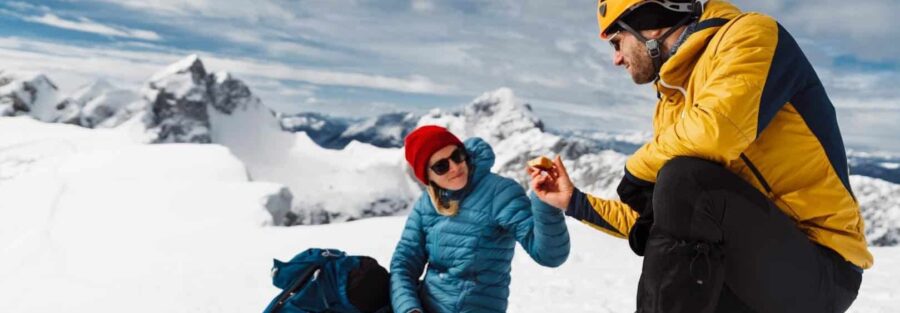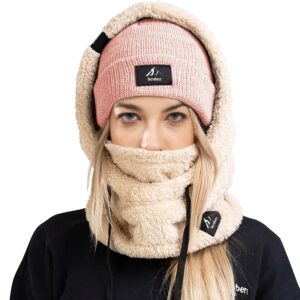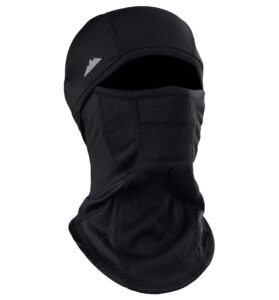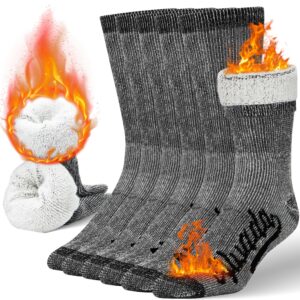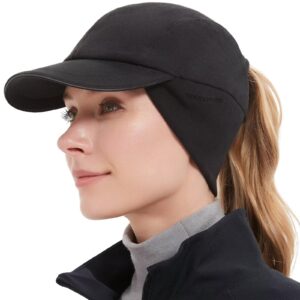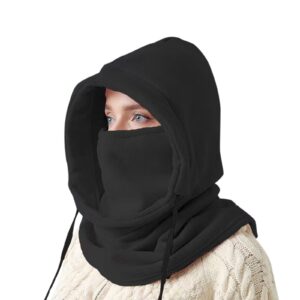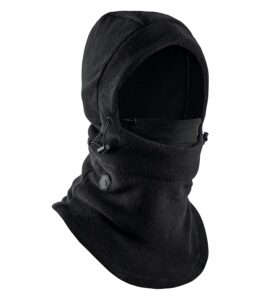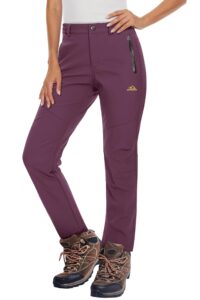Introduction:
Winter hiking lets you explore snowy trails and soak up those quiet landscapes that summer hikers just never see. Let’s check out what makes the best winter hiking gear!
The right winter hiking gear keeps you warm, dry, and safe when temperatures drop and conditions get tough.
Cold weather gear works differently than your regular hiking kit.
It has to handle snow, ice, and freezing temps but still let you move comfortably.
Winter hiking gear usually means insulated boots, waterproof gloves, warm base layers, and traction devices for icy trails.
Each piece plays a role in keeping your temperature steady and shielding you from the elements.
Quality winter gear uses materials like merino wool, synthetic insulation, and waterproof membranes that still perform when things get cold and soggy.
Insulation type, waterproof ratings, and fit matter most when you’re picking winter hiking gear.
Down and synthetic fills both have their strengths, especially in wet or dry conditions.
Waterproof ratings give you a sense of how well your gear can keep out snow or rain.
The right fit is key, if your gloves or boots are too tight, you’ll lose blood flow and warmth fast.
Here are our top picks to help you stay warm, dry, and safe out there.
Yaktrax Walk Traction Cleats
These traction cleats give you a reliable grip on icy trails and make winter hiking way safer for most folks.
Pros
- Steel coils grip ice and packed snow well
- Easy to slip over hiking boots and they actually stay put
- Super lightweight, so you barely notice them in your pack
Cons
- Takes some muscle to stretch over big boots the first few times
- Not great on rocky terrain
- Feels a bit weird on pavement or dry ground
We tried these cleats on a pretty icy hike and felt confident on every step.
The steel coils dug into frozen ground that would’ve sent us sliding otherwise.
They stayed put on our boots, no annoying shifting or slipping off.
Getting them on was a bit of a struggle at first.
The rubber bands are tight, so you have to stretch them over winter boots.
After a couple uses, they got easier to pull on as the material loosened up a bit.
The coil design actually works better than spikes on most winter surfaces.
We could walk forward, backward, sideways and never lost grip.
They handled both ice and packed snow just fine in our tests.
We did notice they work best on smoother icy trails, not so much on rocky or root-filled paths.
The coils can catch on sharp rocks, so they’re less ideal for technical hikes.
Honestly, they’re perfect for groomed winter trails and icy sidewalks where you need basic traction but don’t want heavy-duty spikes.
Senllen Fleece Balaclava
This balaclava is a great pick for winter hikers who want solid face protection on a budget.
Pros
- Lightweight fleece feels soft and blocks wind
- Drawstrings let you adjust the fit and keep snow out
- Wear it as a neck warmer, half mask, or full face cover
Cons
- Material is thinner than you’d expect for super cold days
- Can get a bit hot if you’re working hard
- Doesn’t look exactly like the product photos
We wore this fleece balaclava on a few cold hikes and it did the job for moderate winter weather.
The polyester fleece felt nice against our skin, no itchiness even after hours outside.
The adjustable design came in handy.
We tightened the drawstrings when the wind picked up, loosened them when things warmed up.
The stretchy fabric moved with us, didn’t bunch up or slide down.
We liked being able to switch up how we wore it, neck warmer on mild days, full face cover when it got cold.
The breathable fabric helped keep our glasses from fogging up.
It’s pretty lightweight, so it works best above 20°F.
On really cold or windy days, we needed another layer underneath.
Tough Headwear Balaclava
This one’s another solid option for winter hikers who want face protection without spending a ton.
Pros
- Ultra-soft fleece lining keeps your face cozy, not bulky
- Breathable mesh panels stop you from getting sweaty and stuffy
- Anti-fog design works pretty well with goggles and glasses
Cons
- Hand-wash only, which is a pain after muddy hikes
- One-size may feel tight if you have a big head
- Pull-on style can mess up your hair
We tested this mask on a bunch of winter hikes and loved how soft the fleece felt.
The material stretched well and didn’t lose its shape after several wears.
The mesh panels made a noticeable difference on steep climbs.
We stayed comfortable, even when we were working hard, which isn’t always the case with budget gear.
Our glasses mostly stayed clear, though heavy breathing during tough sections still caused a little fog.
The neck coverage blocked wind better than we expected and tucked nicely into our jacket collars.
The flat seams felt smooth under helmets and beanies.
The flexible design moved with our faces, so we could talk or snack without feeling restricted.
QIO CHUANG Emergency Mylar Blankets
These emergency blankets are a must have for winter hikers who need reliable backup gear without spending much.
Pros
- Reflects body heat surprisingly well, even when it’s freezing
- So compact and lightweight you can stash them anywhere
- You get four, so you can share or keep extras for emergencies
Cons
- Loud crinkly noise
- Tears easily if you’re rough or snag it on something sharp
- No breathability, so condensation builds up inside fast
We’ve used these blankets on a few winter camping trips and honestly, they work better than you’d think.
The mylar reflects body heat back and kept us warm when temps dropped below freezing.
The size is great, each blanket folds down smaller than a deck of cards.
We could stash one in every pocket without noticing the weight.
One time during a snowstorm, we wrapped up in one while setting up camp.
It blocked the wind and kept us warm enough to use our hands without gloves.
The 84-inch length covers your whole body if you need it.
Durability isn’t amazing, though.
We found small tears along the edges after a few uses.
Now we handle them more gently and avoid zippers or trekking poles.
Alvada Merino Wool Hiking Socks
If you want warm, comfy feet without paying a premium, these socks are a solid choice for winter hikes.
Pros
- Keep your feet warm even when it’s freezing out
- Cushioned footbed helps with fatigue on long hikes
- Easy care
Cons
- Don’t last as long as pricier merino wool socks
- Not quite as soft as the top brands
- Might be too thick for some boots
We’ve put these socks through some tough winter trails and they hold up well.
The merino wool blend keeps our feet warm without that scratchy feeling you sometimes get with cheaper wool.
Our feet stayed comfy during a full day in 20-degree weather.
The cushioning makes a difference, especially on rocky terrain.
We had less soreness at the end of long days compared to our old cotton socks.
The arch support keeps them in place, so we didn’t have to stop and adjust.
They wash up well in cold water and dry pretty quickly.
No shrinking or pilling after several washes, which is always nice.
The fit is snug around the calf but not constricting.
But for the price, they’re a good middle ground between cheap synthetics and expensive merino brands.
GADIEMKENSD Fleece Ponytail Hat
This winter hat feels cozy for cold weather hikes. The fleece keeps you warm, and the ponytail opening is a real perk, though the sizing runs a bit small if you’ve got a bigger head.
Pros
- Flip-up ear warmers let you adjust as you heat up on the trail
- Reflective details around the brim and ponytail hole help with visibility in low light
- Ponytail hole works for high ponytails and braids, no awkward hair jams
Cons
- Fits snug and can feel tight if your head’s on the larger side
- Fleece attracts lint and debris from backpack straps
- Ear flaps get a little bulky when you flip them up
We took this hat out on a few winter day hikes. The fleece kept our heads and ears warm when the wind picked up.
The fabric feels soft and doesn’t itch or irritate, even after hours outside.
The ponytail opening is honestly a game changer. We could pull our hair through without that weird pressure or any headaches.
Those reflective stitches actually work. Our headlamps caught the silver details, making us a bit more visible to other hikers in the early morning and at dusk.
We liked the temperature control. As we warmed up on climbs, flipping the ear warmers up cooled us off without needing to take the hat off every five minutes.
CAZYTOYZ Winter Balaclava
This fleece face mask brings solid warmth and wind protection for winter hikers at a budget price. Some folks might find the fit a little off, though.
Pros
- Full head and neck coverage
- Soft fleece feels gentle on skin, even during long hikes
- Works as a hood, scarf, and neck warmer all in one
Cons
- Fits tight around the face and can get uncomfortable after a while
- Basic build quality
- Breath moisture builds up inside when you’re working hard
We wore this balaclava on a few cold hikes. It really keeps wind off your face, and the fleece blocks those biting gusts that usually sting exposed skin.
Our necks stayed toasty even when temps dipped below freezing.
The drawstring lets you fine-tune the fit. We tightened it up when the wind howled and loosened it when things calmed down.
It’s handy that you can wear it as just a neck warmer if you get too warm on the uphill stretches.
But comfort isn’t perfect. The face opening feels snug and can leave marks after a few hours. We noticed our breath collecting as moisture inside, which got annoying on long climbs.
Tough Headwear Fleece Balaclava
We recommend this balaclava for winter hikers who want reliable face protection. It fits under helmets and dries quickly, which is a big plus on sweaty climbs.
Pros
- Warm, soft fleece keeps your face cozy
- Smart mouth panel makes it easier to breathe hard without the fabric sticking to you
- Quick-drying fabric means you don’t get that gross clammy feeling
Cons
- You have to hand wash it, which is kind of a hassle
- Pull-on design can be tricky to get just right
- One size fits all doesn’t work for every head shape
The fleece feels soft and didn’t bother our skin, even after hours on the trail.
The mouth panel really helps when you’re breathing hard up steep hills. Air flows through without the fabric plastering to your mouth and nose, and we didn’t get that annoying moisture buildup.
We liked the extended neck coverage. It blocks wind from sneaking in around your jacket collar and fits under hats or helmets without adding bulk.
The fabric stretches with your head but keeps its shape. No weird sagging or bunching.
MAGCOMSEN Women’s Waterproof Snow Pants
These pants bring solid warmth and water protection for winter activities. They’re a solid pick for most outdoor adventures.
Pros
- Fleece lining keeps your legs warm, even when it’s freezing
- Water-resistant coating sheds snow and light rain well
- Two zippered pockets keep small stuff safe
Cons
- Elastic waistband can dig in after a while
- The fabric makes a swishing noise when you walk
- Sizing runs small compared to other brands
Light snow brushed off easily, and the pants stayed dry in wet conditions. We did notice some moisture getting through after a long time in really heavy, wet snow.
The zippered pockets are handy. We kept our phone and keys in there with no worries, and the zippers worked smoothly.
The fit runs snug around the waist. The elastic panels help a bit, but after a few hours, they pressed into our hips. We’d suggest going one size up for comfort.
Buying Guide
When we shop for winter hiking gear, we’ve got to think about our specific needs first. Where do we hike? What kind of weather do we deal with?
|
Gear Item |
Type |
Weight/Packability |
Best For |
|
Yaktrax Walk Traction Cleats |
Traction device (steel coils) |
Super light, pocket-sized |
Icy trails & packed snow |
|
Senllen Fleece Balaclava |
Lightweight fleece face cover |
Lightweight |
Moderate cold & wind protection |
|
Tough Headwear Balaclava |
Fleece balaclava with mesh panels |
Lightweight |
Breathable face protection on active hikes |
|
QIO CHUANG Emergency Mylar Blankets |
Emergency heat-reflective blanket |
Ultra-light, folds smaller than a deck of cards |
Emergency warmth & backup |
|
Alvada Merino Wool Hiking Socks |
Merino wool hiking socks |
Medium (thicker wool blend) |
Affordable warm socks for winter hikes |
|
GADIEMKENSD Fleece Ponytail Hat |
Fleece winter hat with ponytail hole |
Lightweight |
Cold hikes with hair management needs |
|
CAZYTOYZ Winter Balaclava |
Full fleece face/neck cover |
Medium, not very compact |
Budget full-face winter protection |
|
Tough Headwear Fleece Balaclava |
Quick-dry fleece balaclava |
Light, quick-dry fabric |
Reliable face warmth & helmet use |
|
MAGCOMSEN Women’s Waterproof Snow Pants |
Insulated waterproof snow pants |
Heavy, less packable |
Warmth & water resistance for snow hikes |
Climate Considerations
Cold and dry is one thing, wet and snowy is another. Match your gear to your local winter weather, not just what looks cool online.
Extreme cold means you’ll want more insulation. Wet conditions call for better waterproofing, no way around it.
Key Features to Look For
| Gear Type | Important Features |
|---|---|
| Base layers | Moisture-wicking, quick-dry fabric |
| Insulation | Warmth-to-weight ratio, packability |
| Outer shells | Waterproof rating, breathability |
| Boots | Traction, insulation rating, fit |
| Gloves | Dexterity, grip, warmth retention |
Fit and Comfort
Try gear on before buying if you can. Boots need to fit with thick socks but shouldn’t be loose.
Layers should move with you, not fight you. Tight gear cuts off blood flow and leaves you cold.
Budget Planning
Yeah, quality winter gear costs more upfront, but it usually lasts longer. Prioritize the most important stuff first.
Must-haves: insulated boots, base layers, waterproof jacket.
Extras: gaiters, hand warmers, little accessories.
Support the Adventure
To make your walls less boring, check out my photography portfolio and bring a piece of the wild and my story into your home.
If you’d like to fuel future adventures, you can donate a coffee on Ko-Fi. Every cup keeps me chasing sunrises and stories.
When you shop using my affiliate links, every click helps support this blog at no extra cost to you. It’s a small way to keep Unicorn Adventure alive and kicking while I keep exploring.
Subscribe to my mailing list for future updates, new stories, and behind-the-scenes adventures.
Stay connected with me on Instagram and Facebook for more photos and daily inspiration.
Thanks for being part of the journey, Unicorn Squadron!


